It looks like you're using an Ad Blocker.
Please white-list or disable AboveTopSecret.com in your ad-blocking tool.
Thank you.
Some features of ATS will be disabled while you continue to use an ad-blocker.
share:
I disagree with one point in that article ... I think it was an A-3 Skywarrior with bunker/buster missile and AA colors and fitted with GlobalHawk
guidance/remote. The engines and size match better than the Global Hawk.
What's a matter Howie ... little upset that your disinfo tactics suck or that the truth is getting too close for your Neocon comfort zone ?
Speaking from a psychological point of view, it isn't hard, during traumatic events, to see one thing but then remember seeing something different
based on other information you gather during the situation. I could cite specific experiments relating to this if any would like.
One such experiment showed such an effect from racism. I would have to go dig out the info on the study and who performed it, etc., but basically a
picture was shown to a number of people with a white man holding a knife and standing aggressively in front of a black man. When later questioned of
the picture, most participates recalled that the black man had the knife.
Our memories are thus easy manipulating based on other information. In this case, the other information is racist in nature.
I think this is more of a factor of people seeing this or that rather than actually lying. The object that hit the Pentagon would be moving
incredibly fast and would be so unusually low that it would be an oddity anyway, not to mention the trauma of it all, and it would've been so much
easier to remember that incorrectly than a simple still photo.
PS - Where are the security videos? Hm.
[edit on 4-1-2006 by bsbray11]
How can you American people wear all this rubbish that your government feeds you ? Ever since Bush and his pals stole their first election, they have
done nothing but lie and put up smoke screens to try to divert the real issues. Especially regarding 11th September and the circus immediately
following that day. As for evidence of an airliner crashing into the pentagon, aren't they rather large ? Wasn't the roof of the pentagon still
intact after impact ? Where parts of the wings and tail found ? Blackbox recorder ? I could go on but ....... Anyway, Iraq is going quite well
though. No mass destruction weapons found, no weapons factories, no great underground bunker cities found, etc, etc, etc. Why do you think Colin
Powell quit ? Not what I call great intelligence. Hopefully the most paranoid nation on earth will one day put Bush and his government on notice for
real answers. The world has been watching and laughing at this kind of American professionalism for the past few years. It's getting a bit old and
really doesn't wash.
I remember all the lies after 9/11, they would make something up, and the press would say nothing. Then when the press had shown signs of asking some
real questions, they were sent Anthrax.
The Government said things like:
"we never dreamed they would use airliners as missles"
This went on and on, they would get caught in one lie and spin another.
The press would ask Ari Fliescher a question, and that creep would say something very shocking to get them to shut up. Dont you people remember how
guilty the Government officials seemed?
High jacker flew around for two hours and there were not any military jets in sight? When asked this question Rummy said: Only the president has
athority to have a civilian airliner shot down. How about at least an escort? That is normal operating procedure.
Hopefully we can figure this all out before our Government attacks us again. They want American freedom to end. That freedom has always been a becon
of hope for the common man. We are or maybe already have lost the republic. God only knows how much I used to lov this country, now I feel remorse for
something that once was.
If my memory was a bit younger I could articulate what I feel a little better, but that with really bad typing skills make it hard for me to do
this.
I won't believe a thing until I see security video. Oh and they better not use some high-tech computer program to edit in an airliner, lol.
Forgot to mention that Catherder still did a great job stating his views on what happened at the pentagon. I may not completely agree, but I still
want to give you credit for doing so much research.
[edit on 4-1-2006 by psalm_of_lydia]
The next time you see a crashed airliner on the news, they happen regularly, take a good look. You wont have to squint for something familiar to look
at, especially engines, that in this case should have been in much larger pieces having been severed from the fusilage along with the wings. This guy
put a lot of info together--but the hole on his first picture doesn't look like the next one with the firefighter in front. Focus on the wall to the
right of the hole in both pictures.
It could've been a different kind of plane. But videos will answer all our questions.
Originally posted by kazi The next time you see a crashed airliner on the news, they happen regularly, take a good look. You wont have to squint for something familiar to look at, especially engines, that in this case should have been in much larger pieces having been severed from the fusilage along with the wings. This guy put a lot of info together--but the hole on his first picture doesn't look like the next one with the firefighter in front. Focus on the wall to the right of the hole in both pictures.
Something to chew on for a while.....
......wait, no video? It must be a missile then. (sorry about the sarcasm but it's to make a point) [edit on 10-1-2006 by hogknot] [edit on 10-1-2006 by hogknot]
To be clear: We believe that American Airlines Flight 77 hit the Pentagon on 9/11/2001 because we know far too many friends and colleagues in Washington who saw the plane come in over the freeway - some right over their heads - and felt the earth shake as it disappeared into the Pentagon. And we think people who believe they can uncover the truth about anything by surfing the Web are deceiving themselves in a dangerous way.
The next time you see a crashed airliner on tv the chances are pretty darned good that it won't have crashed into a kevlar reinforced concrete building designed to withstand a massive truck bomb AGAINST THE WALL of the building. A building deep enough for the plane to go completely into
Originally posted by kazi The next time you see a crashed airliner on the news, they happen regularly, take a good look. You wont have to squint for something familiar to look at, especially engines, that in this case should have been in much larger pieces having been severed from the fusilage along with the wings. This guy put a lot of info together--but the hole on his first picture doesn't look like the next one with the firefighter in front. Focus on the wall to the right of the hole in both pictures.
That is beside the fact that normally the pilots are fighting to control the angle of impact and the slow it down, and keep the nose up, to cause the least amount of damage possible. As opposed to someone trying to ram it home and cause as much damage as they can…
Originally posted by Zaphod58 The next time you see a crashed airliner on tv the chances are pretty darned good that it won't have crashed into a kevlar reinforced concrete building designed to withstand a massive truck bomb AGAINST THE WALL of the building. A building deep enough for the plane to go completely into
Just some corrections. To hopefully clear up a few things.
This disc:
 Is not part of the Honeywell APU.
I posed the question at AOGspares.com. The admin answered the question for me.
Is not part of the Honeywell APU.
I posed the question at AOGspares.com. The admin answered the question for me.
 This is 'supposedly' an engine from the WTC.
In case anybody missed this...
Nila Sagadevan, Aeronautical Engineer and Commercial Pilot on the Pentagon Strike:
mp3.rbnlive.com...
Visual Evidence not mentioned by "Catherder" or Joe Quinn...
Here are the "wing/engine" damage points:
The black line on the building above the fence is supposed to be a wing mark. Please note the undamaged portion of fence still standing, barely
damaged Nissan 300Z, and untouched Jeep Grand Cherokee. Also note the portion of fence laying on top of the 300Z is thrown AWAY from the building.
This is 'supposedly' an engine from the WTC.
In case anybody missed this...
Nila Sagadevan, Aeronautical Engineer and Commercial Pilot on the Pentagon Strike:
mp3.rbnlive.com...
Visual Evidence not mentioned by "Catherder" or Joe Quinn...
Here are the "wing/engine" damage points:
The black line on the building above the fence is supposed to be a wing mark. Please note the undamaged portion of fence still standing, barely
damaged Nissan 300Z, and untouched Jeep Grand Cherokee. Also note the portion of fence laying on top of the 300Z is thrown AWAY from the building.
 The Jeep Grand Cherokee practically in it's flight path...
The Jeep Grand Cherokee practically in it's flight path...
 The other, undamaged, side...
The other, undamaged, side...
 Again, the plane and/or plane debris would have struck this car....
Again, the plane and/or plane debris would have struck this car....
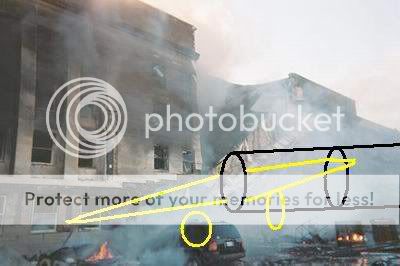 The left wing/engine?:
The left wing/engine?:

 Straight out to the right from where the photographer is standing you would probably end up where the burning cars were.
Straight out to the right from where the photographer is standing you would probably end up where the burning cars were.


 The right wing/engine?:
It's the most curious indeed, there appears to be no damage to the columns or the wall, if anything they seem blown upward and outward:
The right wing/engine?:
It's the most curious indeed, there appears to be no damage to the columns or the wall, if anything they seem blown upward and outward:
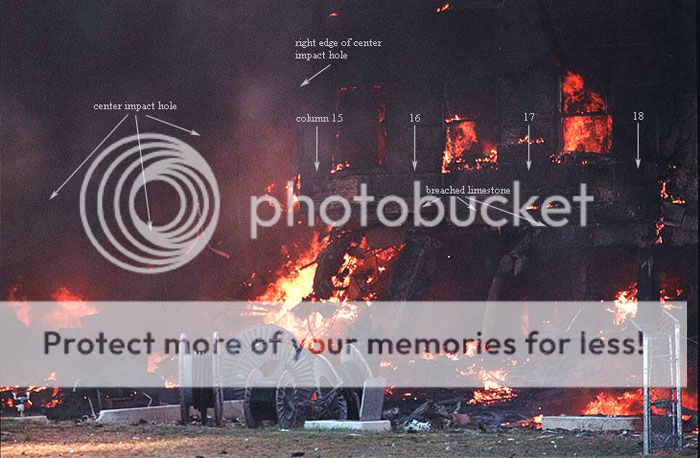

 Note the fire engine and the "huge hole":
Note the fire engine and the "huge hole":
 The same fire engine and a 757:
The same fire engine and a 757:






 And Steve Patterson and a gentleman on a loose change news interview clip saw a "small commuter plane" that held "8-12 people":
external image
external image
American Eagle Commuter
And Ken Ford -
And Steve Patterson and a gentleman on a loose change news interview clip saw a "small commuter plane" that held "8-12 people":
external image
external image
American Eagle Commuter
And Ken Ford -
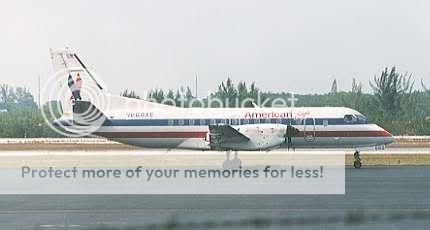
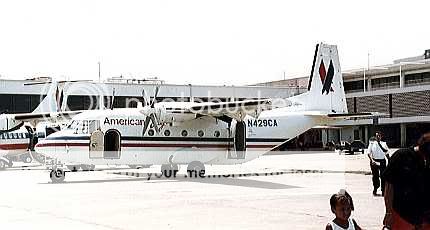
 American Eagle Turbo Prop
It also didn't take off...again the BTS Query:
American Eagle Turbo Prop
It also didn't take off...again the BTS Query:
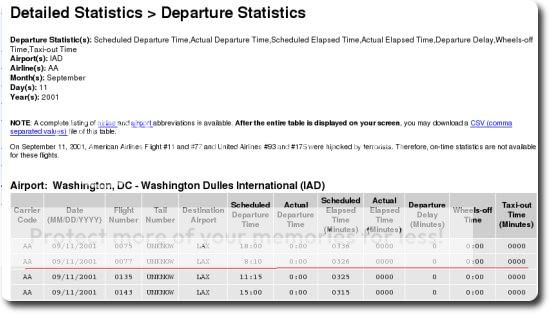
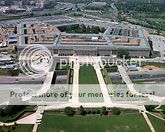
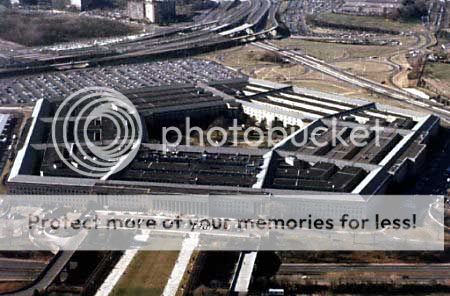
 Russell Pickering: If you look at the (top photo) above you will see the first view of the Pentagon the hijackers saw as they approached after
flying directly over the unprotected White House. It is a virtual landing field without any obstructions at all. They could have hit directly into the
main offices including the Secretary of Defense. For some reason they went 270 degrees out of the way at high speed, and performed a very
sophisticated maneuver with no possible military advantage.
In the photo on the right the red line indicates where a lamp pole was struck by the aircraft.(not shown) From the first lamp pole to the impact site
I estimate to be about 1500 feet. 345 mph is 506 feet per second. This would be roughly 3 seconds of time to concentrate with lamp poles bouncing off
the wings to level out and hit the Pentagon perfectly between the first and second floors without even grazing the lawn.
So you're nervously flying a 757-200 for the first time. Years of planning have gone into the operation. Your goal is to strike at the heart of
America and inflict as much damage as possible. You have the significant psychological/emotional pressure to succeed as a martyr in the world of
radical Islam. You have no idea when interceptor jets are coming. So you decide to pass the unobstructed front of the building, do a maneuver that a
seasoned 757 pilot would find challenging, enter Reagan International air space, risk the whole mission on lamp poles, hit a containerized generator
trailer, clip a cable spool or two, demolish a construction trailer, fly through a tree and hit the only blast resistant and least occupied wedge of
your target?
Ok, so how did it plow into the building?
Apparently, the plane didn't enter the building tail and all as Purdue University and the ASCE would haveyou believe. The back portion of the
fuselage went into the air and the tail flew up and over the rings. What it appears is it exploded upon impact or bombs in that portion were exploded
simultaneously:
Russell Pickering: If you look at the (top photo) above you will see the first view of the Pentagon the hijackers saw as they approached after
flying directly over the unprotected White House. It is a virtual landing field without any obstructions at all. They could have hit directly into the
main offices including the Secretary of Defense. For some reason they went 270 degrees out of the way at high speed, and performed a very
sophisticated maneuver with no possible military advantage.
In the photo on the right the red line indicates where a lamp pole was struck by the aircraft.(not shown) From the first lamp pole to the impact site
I estimate to be about 1500 feet. 345 mph is 506 feet per second. This would be roughly 3 seconds of time to concentrate with lamp poles bouncing off
the wings to level out and hit the Pentagon perfectly between the first and second floors without even grazing the lawn.
So you're nervously flying a 757-200 for the first time. Years of planning have gone into the operation. Your goal is to strike at the heart of
America and inflict as much damage as possible. You have the significant psychological/emotional pressure to succeed as a martyr in the world of
radical Islam. You have no idea when interceptor jets are coming. So you decide to pass the unobstructed front of the building, do a maneuver that a
seasoned 757 pilot would find challenging, enter Reagan International air space, risk the whole mission on lamp poles, hit a containerized generator
trailer, clip a cable spool or two, demolish a construction trailer, fly through a tree and hit the only blast resistant and least occupied wedge of
your target?
Ok, so how did it plow into the building?
Apparently, the plane didn't enter the building tail and all as Purdue University and the ASCE would haveyou believe. The back portion of the
fuselage went into the air and the tail flew up and over the rings. What it appears is it exploded upon impact or bombs in that portion were exploded
simultaneously:
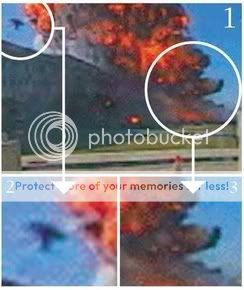
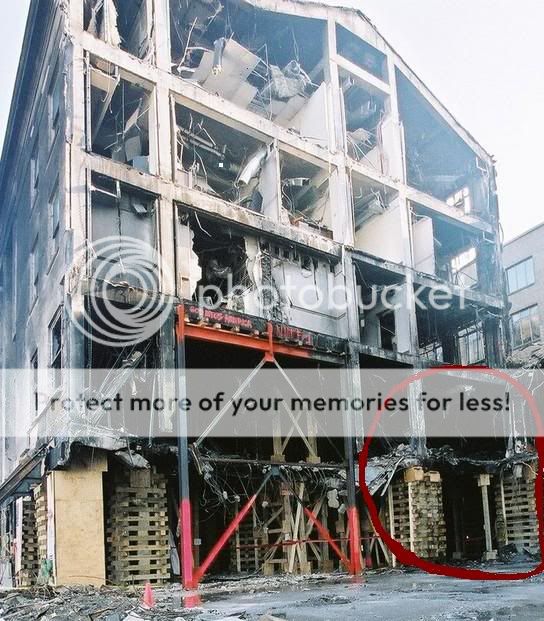 [Mod Edit - Image size. Please see: ATTN: Image Size Guidelines, thank you. Jak]
[edit on 12/1/06 by JAK]
[Mod Edit - Image size. Please see: ATTN: Image Size Guidelines, thank you. Jak]
[edit on 12/1/06 by JAK]

You can go there yourself and ask. I am also in contact with a Licensed A & P Mechanic, well known to the 9/11 Investigative community. He can also verify this. He also doesn't believe a 757 hit the Pentagon. Also I noticed "Catherder" posted this earlier in the thread as being 'the other Pentagon Engine'...IT IS NOT!
Q: Is this a component to an APU, specifically a Honeywell GTCP331-200??? A: The answer to your question is "NO" because its too big. I think what you are looking at is the first stage compressor disk to the main engine. could be a pratt & whitney PW2000 or a general electric CF6-50 motor. Hope that helps.





















"We were watching the airport through binoculars, he said, referring to Reagan National Airport, a short distance away. The plane was a two-engine turbo prop that flew up the river from National. Then it turned back toward the Pentagon. We thought it had been waved off and then it hit the building."









Originally posted by Merc_the_Perp Just some corrections. To hopefully clear up a few things. This disc:Is not part of the Honeywell APU. I posed the question at AOGspares.com. The admin answered the question for me.You can go there yourself and ask. I am also in contact with a Licensed A & P Mechanic, well known to the 9/11 Investigative community. He can also verify this. He also doesn't believe a 757 hit the Pentagon.
Q: Is this a component to an APU, specifically a Honeywell GTCP331-200??? A: The answer to your question is "NO" because its too big. I think what you are looking at is the first stage compressor disk to the main engine. could be a pratt & whitney PW2000 or a general electric CF6-50 motor. Hope that helps.
The GE CF6 Family Engine Overview The GE CF6 family is the cornerstone of the widebody, high bypass ratio turbofan engine business at GE. For more than 30 years, the GE CF6 family of engines has established an impressive operational record. Currently there are more than 180 customers, operating 1,900+ aircraft, averaging 4,150 departures per day, and racking up an impressive 260 million total flight hours since it entered commercial revenue service in 1971. Currently certified on 11 widebody aircraft models and with 16 ratings, the CF6-80C2 has received FAA 180-minute Extended Twin-engine Operations (ETOPS) for the A300, A310, and B767 aircraft, offering route structuring flexibility and added economic benefits. Engine Overview In 1969, GE offered a new 46,000 to 54,000 pound thrust CF6 derivative called the CF6-50 for use on the new DC-10 Series 30 aircraft. It was announced at the 1969 Paris Airshow that the KSSU group (KLM, Swissair, SAS, and UTA) would become the launch customer for the longer range DC-10 Series 30 and that they had selected the CF6-50 to power the new aircraft. In late 1969 the CF6-50 was selected to power the new Airbus Industrie A300. Air France became the launch customer for the A300 by ordering six aircraft in 1971. In 1972, the U.S. Air Force selected GE's CF6-50 to power the Airborne Command Post version of the 747, the E-4A. The engine later achieved its second military application as the powerplant for the KC-10A Advanced Cargo Tanker. The selection of the CF6-50 by the USAF opened the door for GE to offer CF6 power on the 747 in a commercial application. In 1975, KLM was the first airline to order the Boeing 747 with GE CF6 power.
Thank you for your contribution in showing that a 757 did in fact hit the Pentagon. Pretty big engine to put onto a missile, Global Hawk, or any American Eagle Aircraft, don’t ya think? I say that your AP mechanic needs to go back to school, or go work for an airline instead of puttering around on Cessna engines. Ah… PS:
Pratt & Whitney's PW2000 www.pratt-whitney.com..." target='_blank' class='tabOff'/> Pratt & Whitney's PW2000 engine covers the thrust range from 37,000 pounds to 43,000 pounds. Designed for the Boeing 757, PW2000s have accumulated more than 26 million hours through March 2003. A military version of the PW2000, the F117-PW-100, was chosen as the exclusive power plant for the U.S. Air Force C-17 Globemaster III military transport. The USAF chose the PW2000 for its excellent commercial service record and superior range and payload advantages. The USAF also selected the PW2040 to power the C-32A, the military version of the 757.
This last picture is not a 757, look at the difference in the shape of the nose. Edit: Sorry drilled down in the C6's too far.. [edit on 1/12/2006 by defcon5]
Originally posted by Merc_the_Perp The same fire engine and a 757:
Don't involve me in your deception. Did you not notice that this gentleman at AOGspares.com used the words "I think" ? Do you know for a FACT that that engine component came from a A)Flt 77 and B)a PW2000 or GE CF6-50? And also Flt 77 DIDN"t use a PW or GE engine. It used a Rolls Royce RB211. And secondly. There is no reason for the desperate attempt to ridicule or insult my source. He is actually the one who supplied us ALL-the whole world-with the schematics/drawings Of engine parts. My source also "provided the technical data to the members of the US Senate and US Congressional sub-committees on Aviation with respect to 'radio-controlling/flying' Boeing 7x7's from the ground via satellite hook up." Did you or Catherder do anything like that? You know what's funny? You seemed to be all hot and heavy on it being a part of an APU. Since you obviously were supporting this horrendous research piece. Who is Catherder? Is he an Aeronautical Engineer? Is he a commercial pilot? Is he a licensed A & P Mechanic? I didn't think so. That part, the disc, no one know for sure what it is. And it can't be identified without matching serial numbers. Here is another supposed explanation. From the JT8D...
Originally posted by defcon5
Originally posted by Merc_the_Perp Just some corrections. To hopefully clear up a few things. This disc:Is not part of the Honeywell APU. I posed the question at AOGspares.com. The admin answered the question for me.You can go there yourself and ask. I am also in contact with a Licensed A & P Mechanic, well known to the 9/11 Investigative community. He can also verify this. He also doesn't believe a 757 hit the Pentagon.
Q: Is this a component to an APU, specifically a Honeywell GTCP331-200??? A: The answer to your question is "NO" because its too big. I think what you are looking at is the first stage compressor disk to the main engine. could be a pratt & whitney PW2000 or a general electric CF6-50 motor. Hope that helps.
The GE CF6 Family Engine Overview The GE CF6 family is the cornerstone of the widebody, high bypass ratio turbofan engine business at GE. For more than 30 years, the GE CF6 family of engines has established an impressive operational record. Currently there are more than 180 customers, operating 1,900+ aircraft, averaging 4,150 departures per day, and racking up an impressive 260 million total flight hours since it entered commercial revenue service in 1971. Currently certified on 11 widebody aircraft models and with 16 ratings, the CF6-80C2 has received FAA 180-minute Extended Twin-engine Operations (ETOPS) for the A300, A310, and B767 aircraft, offering route structuring flexibility and added economic benefits. Engine Overview In 1969, GE offered a new 46,000 to 54,000 pound thrust CF6 derivative called the CF6-50 for use on the new DC-10 Series 30 aircraft. It was announced at the 1969 Paris Airshow that the KSSU group (KLM, Swissair, SAS, and UTA) would become the launch customer for the longer range DC-10 Series 30 and that they had selected the CF6-50 to power the new aircraft. In late 1969 the CF6-50 was selected to power the new Airbus Industrie A300. Air France became the launch customer for the A300 by ordering six aircraft in 1971. In 1972, the U.S. Air Force selected GE's CF6-50 to power the Airborne Command Post version of the 747, the E-4A. The engine later achieved its second military application as the powerplant for the KC-10A Advanced Cargo Tanker. The selection of the CF6-50 by the USAF opened the door for GE to offer CF6 power on the 747 in a commercial application. In 1975, KLM was the first airline to order the Boeing 747 with GE CF6 power.Thank you for your contribution in showing that a 757 did in fact hit the Pentagon. Pretty big engine to put onto a missile, Global Hawk, or any American Eagle Aircraft, don’t ya think? I say that your AP mechanic needs to go back to school, or go work for an airline instead of puttering around on Cessna engines.
Pratt & Whitney's PW2000 www.pratt-whitney.com..." target='_blank' class='tabOff'/> Pratt & Whitney's PW2000 engine covers the thrust range from 37,000 pounds to 43,000 pounds. Designed for the Boeing 757, PW2000s have accumulated more than 26 million hours through March 2003. A military version of the PW2000, the F117-PW-100, was chosen as the exclusive power plant for the U.S. Air Force C-17 Globemaster III military transport. The USAF chose the PW2000 for its excellent commercial service record and superior range and payload advantages. The USAF also selected the PW2040 to power the C-32A, the military version of the 757.
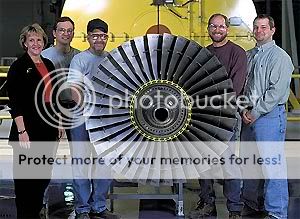
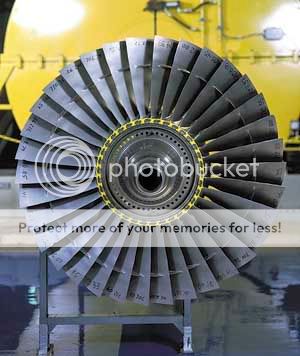
Uh, no, that's NOT a 757. The landing gear is wrong for one thing. The 757 has a very tall distinct landing gear, and that one is short. That's
not a 757 in the bottom picture.
Uh no. You are wrong. You are judging a tiny picture. Try this one: The actual N644AA that supposedly hit the Pentagon... i22.photobucket.com...
Originally posted by Zaphod58 Uh, no, that's NOT a 757. The landing gear is wrong for one thing. The 757 has a very tall distinct landing gear, and that one is short. That's not a 757 in the bottom picture.
Boeing 757 pictures:
757
Another 757
Yet another 757
Here's another one
One more
Notice how tall the nose gear is in all of these pictures, then compare it to your "757" picture. It's too short the last picture you posted.
767
It looks morel ike this in your picture.
just to muddy the waters further - IMHO the disputed photo IMHO is niether a 757 or 767 :
it certainly is NOT 757 - as zaphod points out front strut height is totally wrong
but at first glance i am not happy with the distance fro nose to strut - it may be a didderent version - and the angle of view doesnt help - but i
would need to put them side by side an measure the distance to be convinced that both are 767s
just my 0.02 groats - YMMV
Let's everybody assume that all that "757 plane debris" is really from a 757. Can someone please show me any of the "plane debris" at the
Pentagon that COULD NOT have been planted there?
OK...I got no dog in this fight. I don't know what happened there except there was a hell of an explosion and fire. I have some quibbles with
the presentation here:
1.That picture of an L 1011 purporting to demonstrate aircraft structure doesn't demonstrate anything. We have no idea how that plane was
being dismantled and the fact that they tore the top off it means nothing.
2.The pic with the caption that starts "The next photo..." the nice round hole in the nice brick wall? That one and the next one of the
same hole can be scaled by using the "No Parking" sign on the wall. You think you could get a 757 in there? Also: What's that a picture of? If
you look at the debris and the structural damage there, the pipes and all that, it's all blown OUTWARD making this look more like an exit wound, you
know?
3.Next, when you look at the headon pic of the 757 to see the diameter of the fuselage, check out the diameter of those monster engines
flanking it. If that fuselage made a hole the size of the one described and it's largely hollow and filled with air, what kind of hole are those
engines going to make? They are huge chunks of largely titanium and they are connected through the fuselage by a wing spar. You have not one but
three connected masses striking an area not more than 40 feet long. That's a LOT of kinetic energy focused in a very small area. In the pics
mentioned above, wouldn't there be damage on at least one side of that hole?
4.I saw a pic of the wall at the Pentagon and it looked like there might have been three impacts, but the area on either side of the center
one and the flanking ones was pristine. Where'd that spar go?
5.Lastly...I gotta tell ya...flying a 757 at that speed over that terrain in those conditions and putting it inside a vertical space that's
what, forty feet high? Sweetheart...that's a hell of a bit of flying...low enough to hit a generator in the yard, still high enough not to hit the
ground AT ALL... Try that on your Flight Simulator and get back to me! And this from a guy who's never been in the cockpit before?!!
Whhooooeeeee!!
It's a stretch, ain't it ?
Jackson
here are my 2 cents, if it wasn't supposed to happen like the govenrment says why pray tell did we not shoot it down sooner? we have something
called NORAD that tracks every thing thats in the sky at all times lets say the plane that was heading tward the pentagon suddenly made a huge turn
and headed twards the pentagon NORAD would see this and immiedtly send out a plane or 2 to guide it back to its original destination, same goes for
9/11 please, someone explain to me how NORAD let not 1 or 2 but 3 planes slip by and one of them crash into one of the most secure Air spaced areas?
new topics
-
ILLUMINATION: Dimensions / Degrees – Da Vincis Last Supper And The Philosophers Stone
Secret Societies: 4 hours ago -
Just Sick of It! Done! Can't take it anymore!
General Chit Chat: 5 hours ago -
Speaking of Pandemics
General Conspiracies: 7 hours ago -
Stuck Farmer And His Queue Jumping Spawn
Rant: 7 hours ago
top topics
-
Speaking of Pandemics
General Conspiracies: 7 hours ago, 8 flags -
Paradox of Progress
Ancient & Lost Civilizations: 15 hours ago, 7 flags -
ILLUMINATION: Dimensions / Degrees – Da Vincis Last Supper And The Philosophers Stone
Secret Societies: 4 hours ago, 6 flags -
Stuck Farmer And His Queue Jumping Spawn
Rant: 7 hours ago, 4 flags -
Just Sick of It! Done! Can't take it anymore!
General Chit Chat: 5 hours ago, 4 flags
active topics
-
Musk calls on King Charles III to dissolve Parliament over Oldham sex grooming gangs
Mainstream News • 137 • : fringeofthefringe -
Post A Funny (T&C Friendly) Pic Part IV: The LOL awakens!
General Chit Chat • 7992 • : underpass61 -
Paradox of Progress
Ancient & Lost Civilizations • 7 • : BeyondKnowledge3 -
Candidate Harris Supporter MARK CUBAN Says Trump Has No Smart-Intelligent Women in His Orbit.
2024 Elections • 77 • : WeMustCare -
-@TH3WH17ERABB17- -Q- ---TIME TO SHOW THE WORLD--- -Part- --44--
Dissecting Disinformation • 3933 • : Crazierfox -
ILLUMINATION: Dimensions / Degrees – Da Vincis Last Supper And The Philosophers Stone
Secret Societies • 4 • : CarlLaFong -
Just Sick of It! Done! Can't take it anymore!
General Chit Chat • 8 • : BeyondKnowledge3 -
DONALD J. TRUMP - TIME's Most Extraordinary Person of the Year 2024.
Mainstream News • 47 • : Oldcarpy2 -
Tesla Cybertruck Explodes in Front of Trump Hotel in Las Vegas
Mainstream News • 225 • : BeyondKnowledge3 -
Winter Storm
Fragile Earth • 26 • : Asktheanimals
